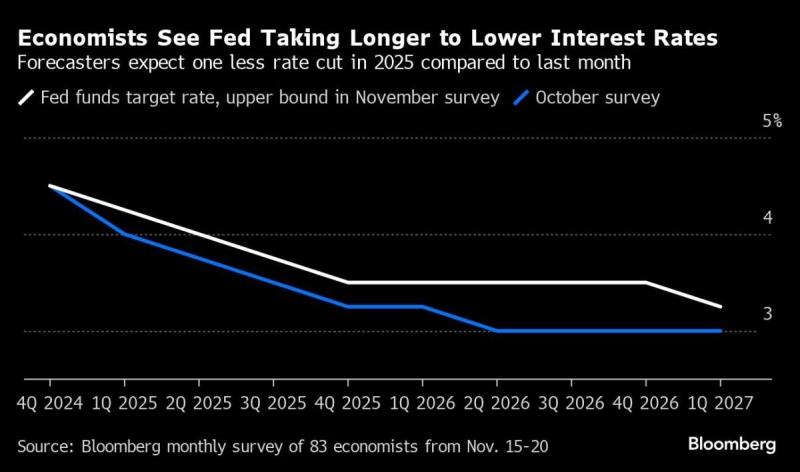
I. Introduction
With clear Republican victories in the White House and the Senate, and a very slim majority for either side in the House of Representatives, we can expect tax legislation in the coming year. It is expected that the President elect will likely seek to enact his economic agenda as quickly as possible. While Congress may work for bipartisan support of any such legislation, Congressional Republicans and the Administration have the ability to utilize the filibuster-proof budget reconciliation rules (that eliminate the need for 60 votes in the Senate) to pass such tax legislation. We understand that the advance preparation and work for a 2025 reconciliation bill began in Republican Leadership offices over the summer and will continue through the end of the year.
Key to the current discussions of tax policy are provisions from the 2017 Tax Cuts and Jobs Act (the “TCJA”), a large overhaul of the Internal Revenue Code during President Trump’s first term. The TCJA instituted many significant changes to U.S. tax laws, including cutting the corporate rate, lowering individual income tax rates, and introducing a new deduction for passthrough income. However, due to various reasons, including the arcana of procedural rules of Congress associated with the “reconciliation” procedures, many of these provisions were temporary and scheduled to expire at the end of 2025. Exactly which provisions are to be extended, which to be modified, which to be abandoned and how to budget for each of these provisions, is expected to be a part of the legislative agenda next year. It is important to note that, among certain other items, the reduced corporate tax rate enacted in the TCJA is not scheduled to expire.
The most significant expiring provisions of the TCJA are set forth below.
II. Expiring Provisions
A. Changes to non-corporate tax rates, credits, deductions, exemptions and exclusions
The most significant expiring provisions, at least from a political perspective, are the provisions providing significant adjustments to the various tax rates, credits, deductions and similar provisions mostly applicable to individuals, resulting in a broad-scale reversion to the pre-2017 regime for individual taxpayers. The key changes are the following, generally coming into effect in 2026, if not extended or modified:
- The lower individual income tax rates in the TCJA will expire, and the top marginal rate will go from 37% to 39.6%;
- The estate and gift tax exclusion amount will be cut in half to $5 million and then adjusted for inflation, so the estate tax exemption will go from approximately $14 million in 2025 to approximately $7 million in 2026;
- The standard deduction will revert to pre-TCJA levels (almost half the current standard deduction), although the personal exemption amount (which was set to zero under the TCJA) will return to pre-TCJA levels as well;
- The deduction for miscellaneous itemized expenses, including unreimbursed employee expenses and tax preparation fees will return, and taxpayers will be able to deduct miscellaneous itemized expenses above 2% of adjusted gross income (“AGI”);
- The phasing-out of itemized deductions for high income taxpayers will return;
- The TCJA’s cap on the deductibility of state and local tax will expire, so taxpayers will be able to deduct all state and local income taxes (or sales taxes, if selected by the taxpayer) and property taxes—this may be celebrated by higher-income taxpayers in high tax states, but much of the benefit could be tempered by the return of broader scope of the alternative minimum tax discussed immediately below;
- The alternative minimum tax (the “AMT”), which under the TCJA was limited to a small number of taxpayers, will return to its pre-TCJA form (which applied to a much larger group of individual taxpayers);
- The deduction limit for cash charitable deductions will revert to 50% of AGI (as compared the current limit of 60% of AGI);
- The child tax credit will be cut in half so that the maximum credit is $1,000 per child, the refundable portion of the credit will decline from $1,400 to $1,000, and other various adjustments will apply; and
- The broader mortgage interest exemption available under the pre-TCJA regime will return.
B. Employment-related provisions
Certain employment-related provisions will also expire, and many pre-TCJA rules will return, generally in 2026, if not extended or modified. The most significant changes are the following:
- The Work Opportunity Tax Credit, which provides a credit to employers who hire members of certain groups, such as veterans, recipients of various federal welfare benefit programs, and residents of empowerment zones, would expire;
- Employers who pay wages to employees on family and medical leave are generally eligible currently for a credit for a percentage of 12 weeks of paid leave wages—this credit would expire;
- The deductibility of employer-provided meal expenses, currently limited to 50 percent of the meal expense, will be eliminated; and
- The suspension of the exclusion for employer reimbursements for moving expenses for persons other than certain members of the armed services, will be lifted, at which point taxpayers will be able once again to exclude from income qualifying moving expense reimbursements received from an employer.
C. Various business provisions
Multiple provisions designed to create tax benefits or tax reductions for certain business operations or activities are also amongst the set of expiring or changing provisions. Among the key provisions that will change, generally in 2026, if not extended or modified are the following:
- The TCJA introduced the qualified business income deduction for 20% of qualified passthrough income, excluding specified service trade or business income, and ordinary REIT dividends—this deduction would expire, so passthrough income and ordinary REIT dividends will be taxed at ordinary income rates with no deduction;
- The TCJA’s bonus depreciation allowance will continue to decline over the next few years: only a 40% immediate deduction in 2025, 20% in 2026, and no bonus depreciation after 2026 (with some exceptions);
- The special “opportunity zone” rules—whereby taxpayers could defer capital gains if the gains are reinvested in such an opportunity zone and exclude capital gains income after a 10-year holding period—will expire. Similarly, the empowerment zone program’s tax benefits and the New Markets Tax Credit will also expire.
D. International tax provisions
The TCJA also made some significant revisions to the international and cross-border tax rules, many of which will have changes that will automatically trigger in 2025 or 2026. The most material are:
- The “base erosion and anti-abuse tax” (the “BEAT”) minimum tax rate will increase to 12.5% (from 10%) and the calculation of the modified income tax (on which the BEAT minimum tax rate applies) will be adjusted to eliminate the taxpayer’s ability to benefit from certain tax credits;
- The deductions applicable to global intangible low-taxed income (“GILTI”) inclusions for corporations will be reduced (resulting in an increase in the amount of tax imposed on such inclusions)—the deductions for most income will drop from 50% to 37.5%;
- The deduction on “foreign derived intangible income” (“FDII”) will drop from 37.5% to 21.875%; and
- The oft extended “look through” rule (which did not originate in the TCJA) for dividends, interest, rents and royalties received by a controlled foreign corporation from another related controlled foreign corporation is set to expire.
As one can imagine on reading this long list of expiring tax provisions (and not even taking account the many more minor provisions also set to expire or change which are not included above), the likelihood of a new tax bill to address these provisions is high. Given the nature of the Congressional rules around reconciliation and the nature of budget and tax negotiations, attempts to extend many of these provisions would likely involve the addition of new revenue-raising provisions. As such, the prospects of tax reform in 2025 are high. Proskauer closely monitors legislative developments, and additional tax blog posts will be made as specific tax proposals are moved through Congress.
© 2024 Proskauer Rose LLP. by: Robert A. Friedman, Richard M. Corn, Jean M. Bertrand, Amanda H Nussbaum, Martin T Hamilton of Proskauer Rose LLP For more on Tax Legislation, visit the NLR Tax section






